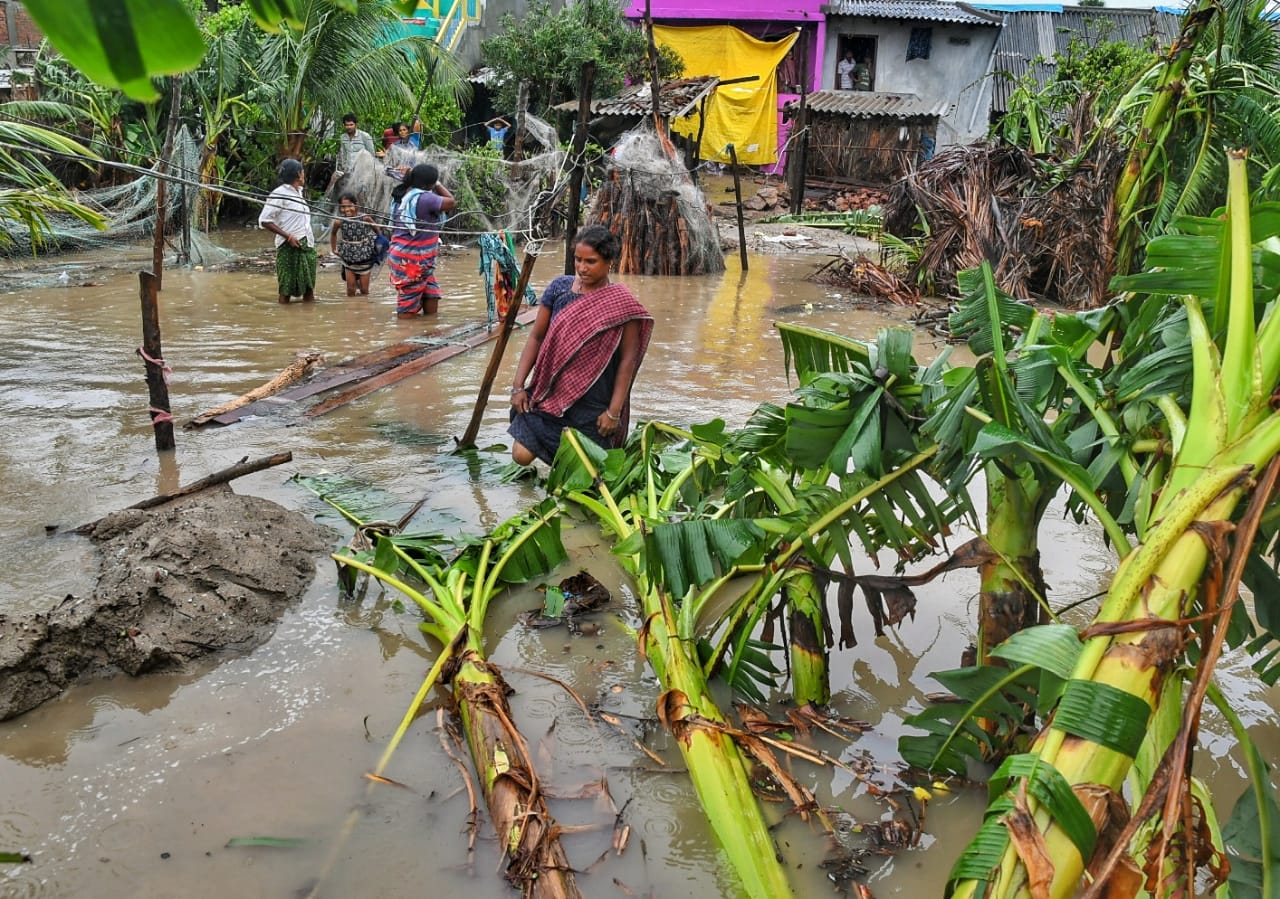
Cyclone Amphan kills over 90 and devastates wide areas of eastern India and Bangladesh
Cyclone Amphan devastated coastal areas of the eastern Indian states of Odisha and West Bengal on Wednesday afternoon, and neighbouring Bangladesh on Thursday morning. Described as a “super cyclonic storm,” Amphan reached wind speeds of 185 kilometres per hour, tearing down powerlines, flooding low-lying areas and taking the lives of over 90 people—76 and 15 in India and Bangladesh respectively.
The Sundarbans mangroves forest region, a 140-hectare UNESCO world heritage site that is home to four million people, bore the brunt of the cyclone on Wednesday afternoon. The region lies on the delta of the Ganges, Brahmaputra and Meghna rivers on the Bay of Bengal. Cyclone Amphan then moved north and north-eastwards, hitting Kolkata, the West Bengal capital, and then Bangladesh on Thursday.
Working people and the rural poor in eastern India and Bangladesh have been worst hit by the disaster, which comes on top of the deadly impact of the coronavirus, which has already claimed more than 3,800 lives in the two countries.
While an estimated total of more than three million people have been evacuated from cyclone affected areas in both countries, their relocation into overcrowded shelters places them in real danger of contracting the highly infectious virus.
West Bengal Chief Minister Mamata Banerjee said that over 70 people had been killed by Cyclone Amphan and announced a meagre compensation package of 250,000 rupees ($US3,300) for the families of victims.
The worst hit areas in West Bengal included South and North 24 Parganas and East Midnapore. The state’s capital Kolkata, which has a population of 15 million, was also battered by the storm.
In a press briefing, West Bengal officials declared that it was “impossible to provide an immediate assessment of the damage,” but added: “Amphan mauled telecommunication systems, uprooted trees and electric poles, destroyed thousands of dwellings, and ravaged roads, bridges and embankments and jetties across North and South 24-Parganas and parts of East Midnapore…
“At least 15 embankments were breached. Telephone connectivity is badly affected… In Minakha alone, 5,200 houses have collapsed. Dozens of places are as badly affected or worse… National Highway 117 had become virtually inaccessible because of fallen trees between Kolkata and Diamond Harbour.”
Kolkata residents told the BBC that it was the worst storm they had experienced in decades and described flooded homes, electricity transformers exploding and extensive power outages.
Krishnachandrapur High School headmaster Chandan Maity told Telegraphindia that Amphan was “the worst cyclone in living memory” and that dangerously high winds had prevented residents from moving to safety. A disaster management official told the publication that over 50,000 mud and brick homes had been severely or permanently damaged in the Sundarbans region. “Almost all tin roofs have been blown away” and most cellphone networks were down, he said.
Chief Minister Banerjee, fearful of the political consequences of the catastrophic impact of the cyclone and rising popular anger over the failure of Indian authorities to protect the population from COVID-19 infections, told the media that the cyclone was “more worrying” than the coronavirus.
“We don’t know how to handle it,” Banerjee said. “Almost everything is destroyed in the coastal villages of the state… area after area has been devastated [and] communications are disrupted. We’ve never seen such a cyclone.”
In Bangladesh, the cyclone struck seven low-lying areas in the country’s south-west including Jashore, Bhola, Barguna, Patuakhali and Pirojpur with high winds and torrential rains. Powerful tidal waves, some as high as 12 feet (3.7 metres), destroyed embankments (levees), inundating villages and towns and cutting electricity supplies to more than five million people.
Ahmadul Kabir, director of Bangladesh’s Cyclone Preparedness Programme, said that around 2.4 million people from 19 coastal districts had been relocated to over 14,600 schools and other buildings that were being used as temporary storm shelters. Hundreds of Rohingya refugees, living in overcrowded and substandard accommodation in Cox’s Bazar, were reported to have been moved to shelters. About one million refugees live at 34 camps in the Cox’s Bazar district.
Several embankments or levees in Barguna and other districts were breached resulting in crops and fish farms being washed away. Sanjib Sagar, a resident of Ghoramara Island in the Sundarbans, told Reuters that many houses have been damaged. Another villager Babul Mondal, 35, who lived on the edge of the Sundarbans said that the houses “look like they have been run over by a bulldozer.”
Enamur Rahman, minister for disaster management and relief, arrogantly told the New Nation that: “Bangladesh is viewed as ‘a role model’ when it comes to calamity management” and that millions had been relocated to over 12,000 cyclone shelters in the coastal regions.
Notwithstanding these claims, the Bangladeshi government’s overcrowded temporary cyclone shelters place working people and the rural poor in real danger of contracting COVID-19.
While the cyclone is an environmental disaster, its impact on the lives and livelihood of millions of people in India and Bangladesh has been worsened by the callous refusal of the ruling elites to provide whatever is necessary to protect working people and the rural poor.
Cyclones, torrential rains and floods are regular events throughout South Asia. Despite this, successive governments of every political colouration in the region have refused to allocate the desperately needed resources to build infrastructure that would mitigate the impact of environmental catastrophes, and health disasters such as COVID-19, on ordinary people.


